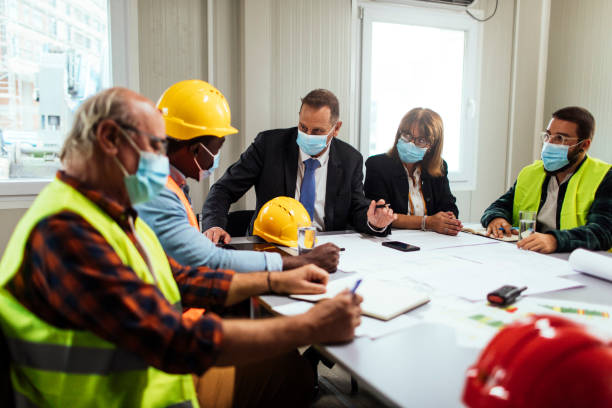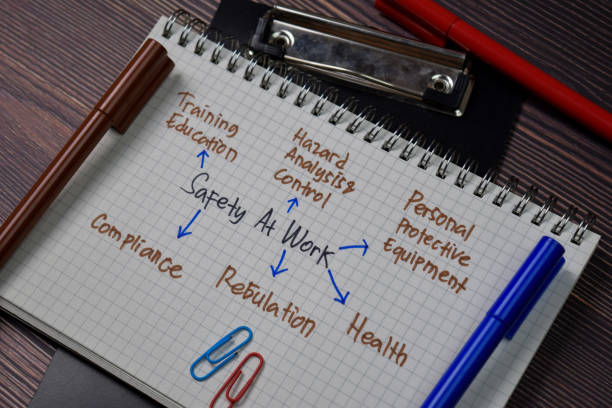Best Practices for Promoting Occupational Safety and Health


April 28 is recognized worldwide as the World Day for Safety and Health at Work. The purpose of this day is to promote the prevention of occupational accidents and diseases. The theme for 2022 is “Anticipate, Prepare and Respond to Crisis – Invest Now in Resilient Occupational Safety and Health Systems.” With that in mind, here are nine tips and best practices to help organizations ensure the safety and health of their workers.

Labor Standards and Working Conditions
Employers must comply with labor standards and provide safe working conditions for their employees. This includes providing health and safety trainings, resources, and equipment to ensure that workers can perform their jobs safely. Employers must also ensure that workers are protected from exposure to hazardous chemicals and materials.
Human Rights and Social Responsibility

Employers have a social responsibility to ensure that workers’ human rights are protected and respected in the workplace. This includes preventing discrimination and harassment, providing fair wages and benefits, and ensuring that workers have the freedom to associate and collectively bargain. By prioritizing human rights and social responsibility in the workplace, employers can create a safer and healthier work environment that promotes the well-being of their workers.
Occupational Health and Workplace Safety
Employers should prioritize occupational health and workplace safety. This includes identifying potential hazards and conducting risk assessments to mitigate the risk of accidents and illnesses. Employers should also encourage a safety culture and provide personal protective equipment (PPE) and ergonomic workstations to reduce the risk of injury.
Hazard Identification and Risk Assessment


Employers should conduct regular hazard identification and risk assessments to identify potential hazards and implement measures to reduce or eliminate the risk of accidents and illnesses. This includes providing training, resources, and equipment to ensure that workers can perform their jobs safely.
Accident Prevention and Injury Management
Employers should have accident prevention and injury management plans in place to ensure that workers receive immediate medical attention and support in the event of an accident or injury. Employers should also provide workers with access to mental health resources and support.
Workplace Health Promotion
Employers should prioritize workplace health promotion to encourage healthy behaviors and lifestyles among workers. This includes providing resources for physical activity, healthy eating, and stress management.


Environmental Sustainability
Working Hours and Time Management
Environmental sustainability in the workplace can also impact the safety and health of workers. For example, exposure to hazardous materials or poor air quality can cause respiratory issues or other health problems. Employers should prioritize environmental sustainability by reducing waste, conserving energy and water, and using sustainable materials and practices. By doing so, employers can create a safer and healthier workplace for their workers while also protecting the environment.
Workers who are overworked and fatigued are at a higher risk of accidents and illnesses. Employers should ensure that workers have reasonable working hours and effective time management practices to avoid burnout and stress-related health issues. This includes providing breaks and time off, and implementing policies to manage work-related stress.
Social Compliance Auditing for Workplace Safety
Social Compliance Auditing Social compliance auditing is an important process to ensure that workplaces are safe, healthy, and ethical. This involves conducting regular audits of working conditions, labor practices, and environmental standards to identify areas for improvement and ensure compliance with relevant regulations and standards. By conducting social compliance audits, employers can proactively identify and address potential risks to worker safety and health, and take steps to mitigate those risks before they become serious issues. It is recommended that employers work with qualified auditors to conduct these audits, and to involve workers in the audit process to ensure their voices and concerns are heard
Conclusion
Ensuring the safety and health of workers is essential for a productive and sustainable workplace. By prioritizing labor standards, human rights, occupational health, and workplace safety, employers can create a culture of safety and well-being. This World Day for Safety and Health at Work, let’s commit to investing in resilient occupational safety and health systems for the benefit of workers everywhere.

